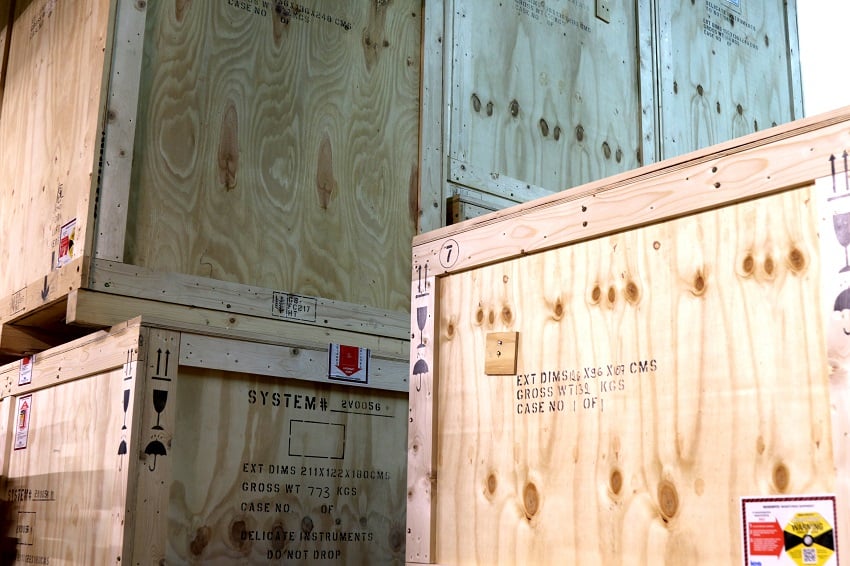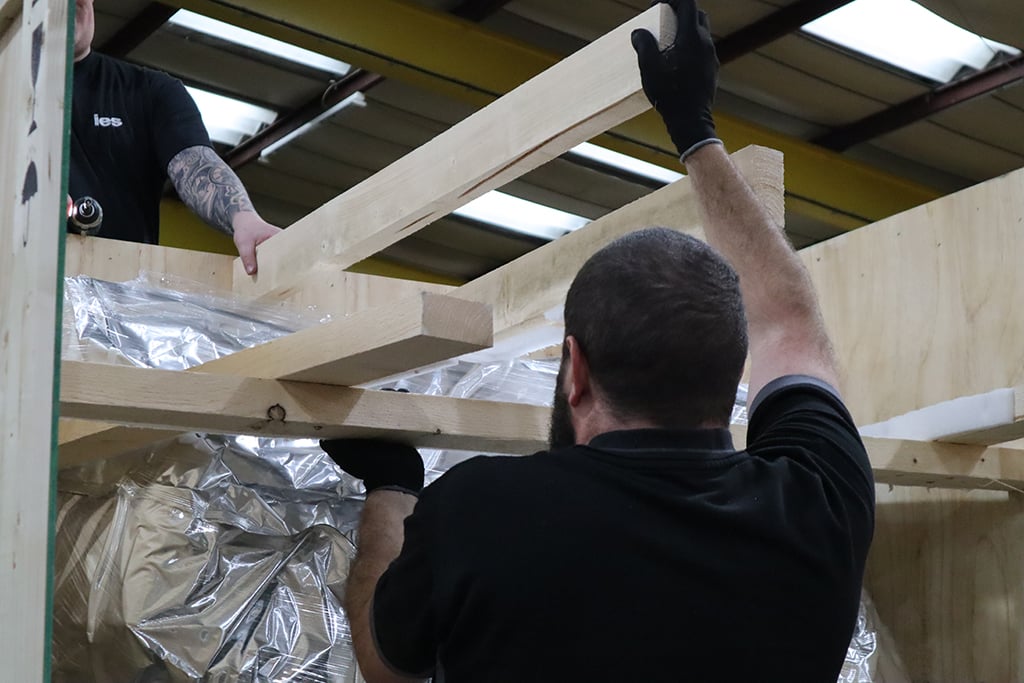Customs and Shipping for Global Factory Relocations: What You Need to Know
Relocating a factory is no easy feat.
We're actively recruiting for a range of roles across sales, engineering, IT and warehouse. Check our careers page to see open positions including apprenticeships.

Whether you’re moving a single piece of equipment or an entire production line, our trusted team of engineers can support every step of your move, from rigging to end-to-end relocation support across the globe.

4 min read
Admin Dec 4, 2019 11:22:38 AM
Global trade is the lifeblood of a growing number of companies. According to a 2023 report from the Office of National Statistics, in 2022 alone, UK businesses exported a total of £383.3 billion in goods and services.
Getting the export process right - ensuring that products reach their destination on time and in perfect condition - is highly important.
Figures from the International Forwarding Association show that 25 per cent of insurance claims on cargo are related to physical damage.
Insurers may not support a claim if the packing is deemed insufficient. So, it’s really not something you should cut corners over. As well as financial losses, the associated administrative burden, loss of business and negative perception created can all be bad for a company’s bottom line.
Let’s take a look at some of the issues that may arise when exporting products, and how these could delay the shipping process or cause problems at the other end.

As previously mentioned, moisture and water damage is a big problem for sea freight.
Water can enter cargo in a number of ways. If the container is sitting in water in the ship’s hold, there’s a chance it could seep up, and high volumes of rain could enter a container. One way for moisture build-up to affect cargo is perhaps less obvious - condensation occurring when the ship goes through areas of differing humidity. This could be caused by travelling from the tropics in Australia to temperate Northern Europe. Often known as container rain, it’s best visualised by imagining what happens to a water bottle left in a car on a hot day - after a while, water evaporates and forms condensation on the walls of the bottle.
Packing materials can add up to 30cm in each dimension to an item. It’s an easy one to overlook, but if these extra dimensions aren’t properly taken into consideration a crate may not fit in a dry van container or a passenger aircraft. This could add extra costs or time to a delivery if not noticed until later on. Keeping to heights of below 150cm means that export packaging will fit onto a passenger aircraft, but exceed this and the choice will be limited to a freighter or commercial aircraft, both of which have their own maximum height limits.
Adding just a little extra packaging may also nudge a crate into the category of needing special handling equipment such as a flat rack container, again adding to costs or the delivery timeline.
All items need bracing within a container. This may require ratchet straps, frames, chains, timber bracing or air cushioning inflatable pillows. It’s important to consider these at the design stages as if there’s no frame to brace against, or there’s panelling or Perspex guarding - meaning that there isn’t a structurally sound place to fix a bracket - the item can be very difficult to secure. This can lead to an increase in costs and timelines while you find a solution. We recommend designing and designating lifting areas into the packaging to help with this.
You may like: Speedy Export Packing for Rapid Business Growth - read how our efficient export packing service allowed Pirate Studios to fast-track their European expansion
When dealing with complex items and long timelines, the one certainty is that plans will change and requirements will be amended. It’s important to account for these ‘certain surprises’ by keeping the communication channels open and asking about:
To ensure safe handling add stencilling with the gross weight and handling requirements to the outside of the case, as well as secure a packing list to the outside of the case. Consult an expert on the specific laws and customs requirements for the country of arrival to avoid a crate getting stuck in customs. One vital mark is the ISPM 15 stamp, showing that solid wood cases have been treated in accordance with the standard.
Now we’ve looked at some of the things that can go wrong, let’s consider how you can prevent some of these issues with specialist case making and export packing services:
Ply batten cases are especially suitable for shipping items by road, airfreight or containerised sea freight. Cases need to be made from the correct plywood for the job to create sufficient structural integrity. With these cases, it's all about the base, so check that the case has a solid base to offer optimal protection. It’s also vital that all non-manufactured wood packaging material above 6mm thick complies with the International Standards for Phytosanitary Measures 15 (ISPM 15) if shipping to a country that applies the regulation.
High value, fragile and delicate crates need special packing. If items need a bit more looking after – perhaps because they’re travelling to high-humidity or high-temperature destinations, or going into long-term storage - then these are some of the aspects to consider:
Multi-use cases protect shipments as well as help your organisation to keep an eye on its carbon footprint. Choosing reusable transit containers with a built-in refurbishment service is a straightforward way to have a positive impact, as well as being cost-effective.

End-to-end services are appreciated by experienced exporters because it’s far easier to have one company handle the entire shipment process. You’ll find that simpler communication, a single chain of command, and a single point of accountability all make for a smoother process and increased peace of mind.
This can include:
Consider how to pack a crate as early as possible – ideally while the item is being manufactured. This may sound exceptionally early, but consulting an exporter sooner can offer huge benefits. As experts, they can highlight any potential problem areas, allowing plenty of time for them to be addressed. This could potentially prove to be a money-saver in the future, avoiding an emergency fix for a premium price.
IES has been manufacturing packing cases for several decades and offers a complete, end-to-end solution. We design the most suitable packing specifications to ensure the safe transit and/or storage of your goods or equipment. Find out more about IES Export Packing services here.
Stay up to date with the latest news and resources from our experts.

Relocating a factory is no easy feat.
Planning a complex capital equipment relocation and looking for the right partner to support the project?
.jpg)
At IES we have been involved with equipment and machinery packing in many industries for over 20 years, so we have a wealth of expertise and...